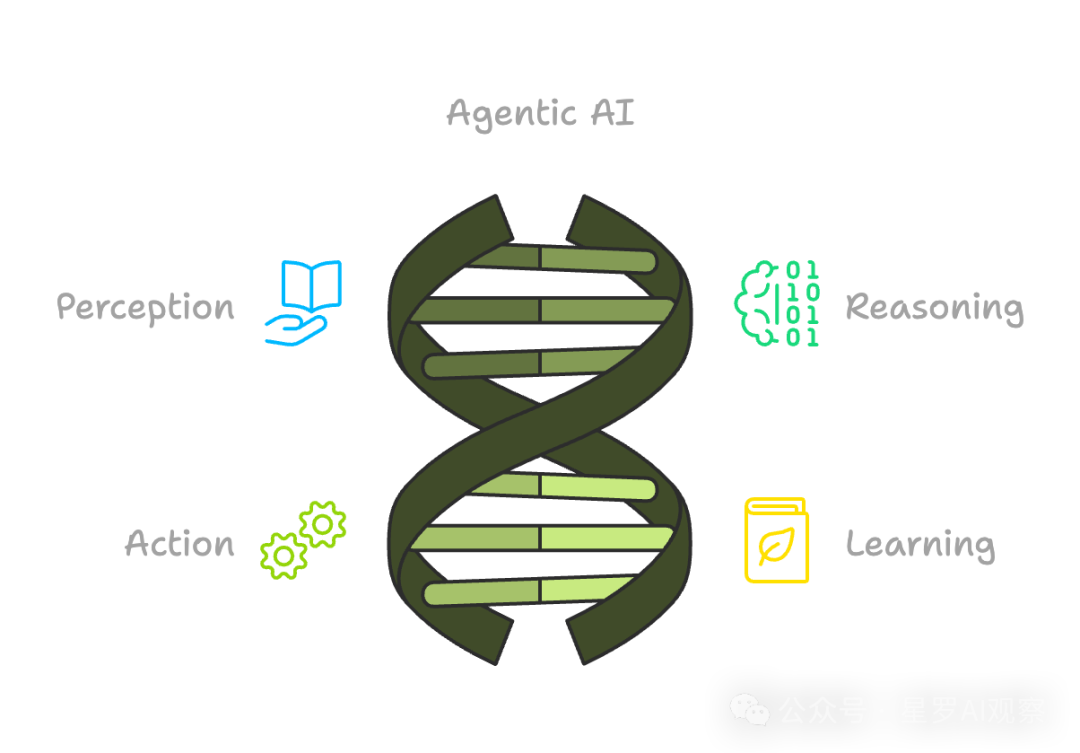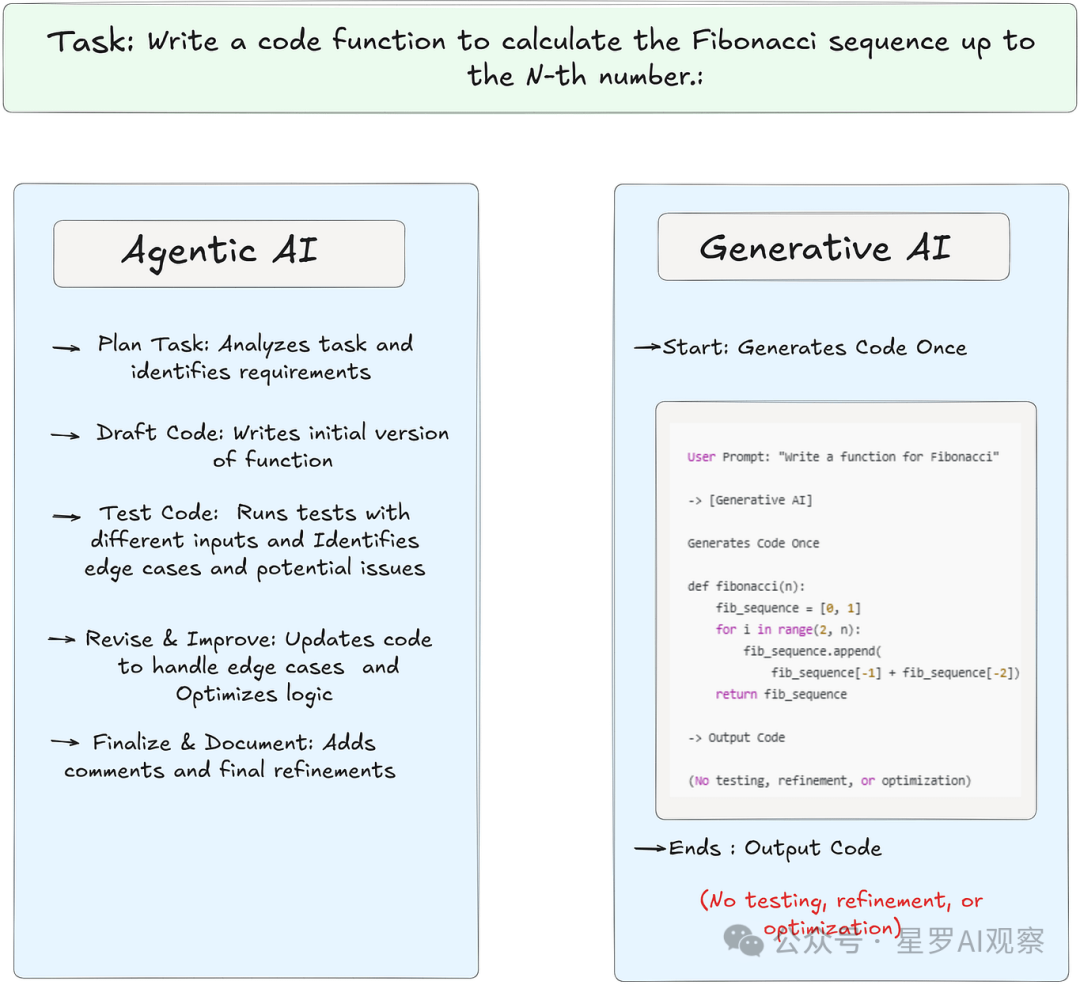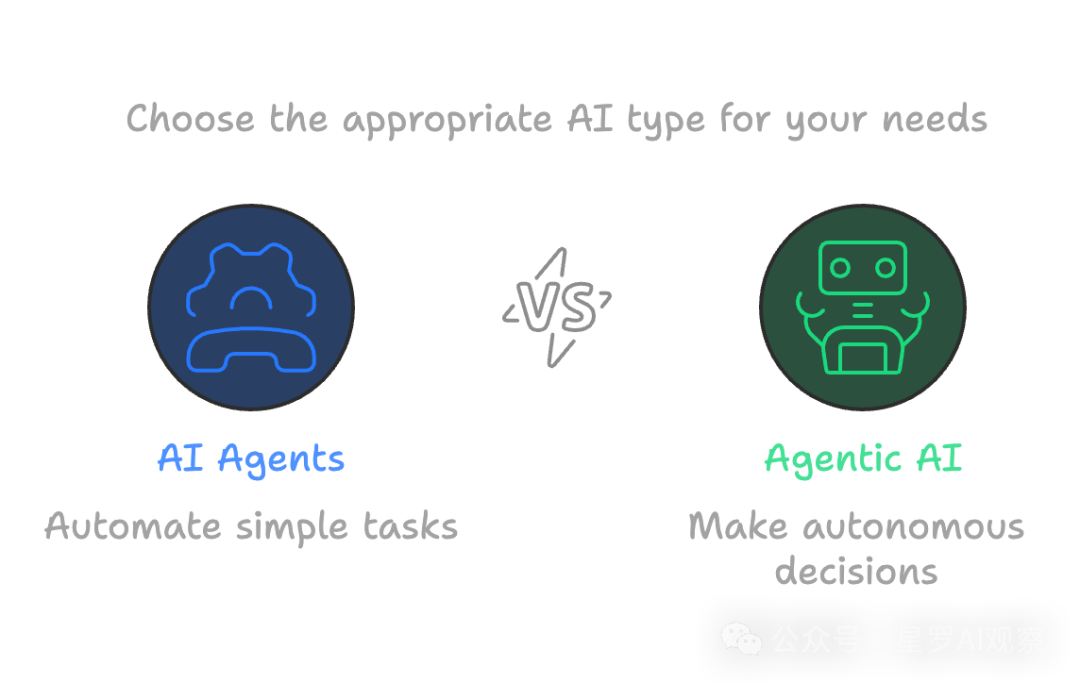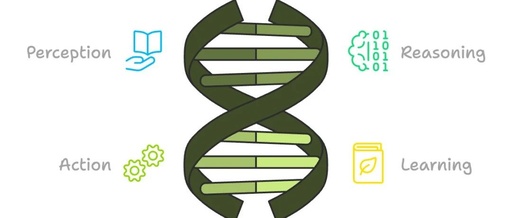The Concept of Agentic AI

-
Perception: Collecting data from the surrounding environment. -
Reasoning: Processing this data to understand what is happening. -
Action: Deciding what action to take based on understanding. -
Learning: Continuously improving and adapting over time, learning from feedback and experiences.
Comparison Between Generative AI and Agentic AI

Agentic AI
-
Autonomy: Agentic AI can act independently without continuous human input. It can be imagined as a robot that operates without human control, making decisions about the next steps based on its surroundings and executing them. -
Goal-Oriented: Agentic AI is directed by clear goals. It does not respond randomly to the world but actively works towards a specific goal. For example, the goal of an autonomous vehicle is to safely take you to your destination, and each of its actions, from turning to braking, serves this goal. -
Continuous Learning: Agentic AI learns from its actions and experiences. When encountering problems or failures, it adjusts. For instance, an AI recommending movies will learn your preferred genres and improve over time to provide better suggestions. -
Suitable for Complex Decisions: Agentic AI does not just make simple choices; it evaluates many options and considers the outcomes. For example, an AI controlling stock trading algorithms analyzes vast amounts of data, predicts trends, and decides whether to buy or sell stocks based on this information. In the future, perhaps AI can offer highly personalized services in finance—adjusting financial advice or investment strategies based on real-time data and predictions. -
Environmental Perception: For AI to make informed choices, it needs to understand its environment. Agentic AI can achieve this through sensors or data. For example, a robot uses cameras to “see” obstacles and then navigates around them.
Generative AI
-
Limited Autonomy: The autonomy of Generative AI is limited. It does not act independently and requires human input to generate responses. It processes received inputs and generates outputs based on learned patterns, but cannot initiate actions or operations without external prompts.Some Generative AI models (like certain types of neural networks) do have a degree of learning ability, but this learning is far less dynamic and autonomous than that of Agentic AI.
-
Task-Oriented: Generative AI is passively task-oriented. It responds to specific prompts or tasks by generating relevant content (such as text or images), but it does not pursue long-term goals or have an overarching aim. Each task is completed based on immediate input.
-
Only Involves Basic Decisions: Generative AI engages in basic decision-making. It selects outputs based on learned patterns and does not evaluate multiple alternatives or consider consequences. For example, when generating text, it selects the most likely next word or phrase based on training but does not make complex, multi-layered decisions.
-
No Learning or Adaptation: Generative AI does not learn or adapt in real-time. Once training is complete, it operates based on the patterns learned during training, but it will not change or improve its performance based on new interactions unless retrained with updated data.
-
No Environmental Perception: Generative AI lacks environmental perception. It can process data such as text or images but cannot perceive or interpret the physical environment. It cannot understand its surroundings and only reacts to given inputs without any external awareness.
Practical Application Comparison
-
Supply Chain Management: Helping companies optimize their supply chains. By autonomously managing inventory, predicting demand, and adjusting delivery routes in real-time, AI can ensure smoother and more efficient operations. For example, Amazon’s warehouse robots, powered by AI, can navigate complex environments, adapt to different conditions, and autonomously move goods within the warehouse. -
Cybersecurity: In the field of cybersecurity, Agentic AI can detect threats and vulnerabilities by analyzing network activities and automatically responding to potential intrusions. -
Healthcare: Assisting in diagnosis, providing treatment suggestions, and managing patient care. Agentic AI can analyze medical data and help doctors make more informed decisions. For example, IBM’s Watson Health uses AI to analyze vast amounts of medical data, learning from new information to provide insights that assist doctors and healthcare professionals.
What is an AI Agent?

Practical Applications of AI Agents
-
Customer Support: The most common use of AI Agents is in customer service, appearing in the form of chatbots that can answer questions, solve problems, and guide customers through processes—all without human intervention. For example, Alipay’s Zhixiaobao and China Mobile’s Lingxi. -
Personal Assistants: Voice assistants like Siri or Google Assistant can help users set alarms, check the weather, or play music—tasks that do not require much decision-making. This type of operation relies on predefined commands, showcasing how AI Agents excel at handling simple, repetitive tasks. -
Email Management: As mentioned earlier, AI Agents can categorize emails, flag important ones, and even provide smart replies to save time. For instance, Google’s Gmail smart compose feature—suggesting phrases based on context to help users respond to emails more quickly. -
Productivity Tools: Tools like Copilot can provide support by suggesting code and helping with debugging. They act like a second pair of eyes on standby, enhancing developers’ efficiency by providing real-time code suggestions, allowing them to focus on other more creative aspects of their work.
Conclusion

